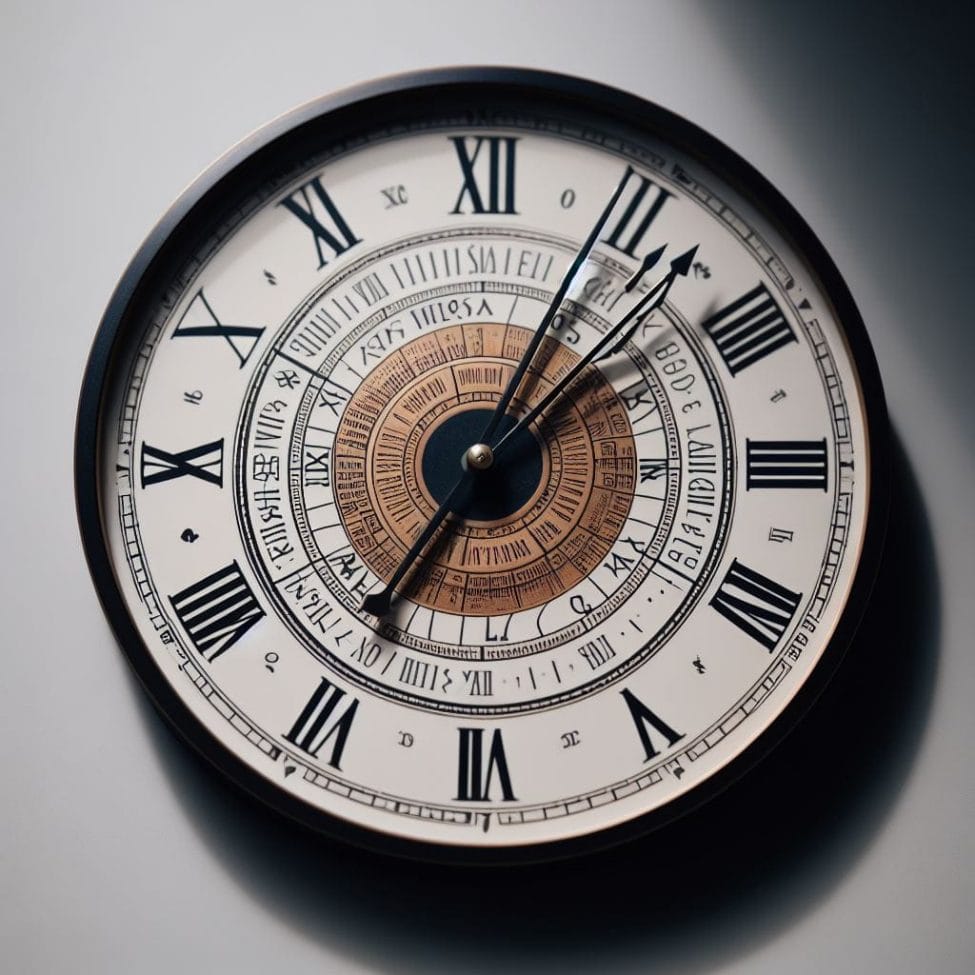Last Updated on November 14, 2023 by Vladimir Vulic
Roman numerals, an ancient numeral system dating back to the Roman Empire, continue to captivate and perplex people today. In a world dominated by Arabic numerals, why do we still encounter Roman numerals in various aspects of our lives? This blog post will guide you through the mystery of Roman numerals, revealing the significance of 500 in Roman numerals and its representation by the letter ‘D,’ the basic rules for writing Roman numerals, and their historical context. Additionally, we will explore the differences between Roman and Arabic numeral systems, discuss their applications today, and provide tips for mastering this fascinating numerical language.
Key Takeaways
- 500 in Roman numerals, represented by the letter ‘D’, have had a significant impact on Roman culture and are still used today in popular culture, and academic and professional fields.
- Mastering Roman numerals requires memorization of key symbols as well as understanding how to convert between Arabic and Roman numerals.
- The transition from the use of Roman to Arabic numeral systems facilitated advancements in mathematics, commerce, and scientific calculations due to its more efficient numerical system.
The Significance of 500 in Roman Numerals

Symbolized by the letter ‘D,’ the number 500 occupies a special place in the Roman numeral system. Derived from the Latin word “quincentum,” the letter ‘D’ emerged as a shorthand method of expressing the significant value of 500 in ancient Rome. The importance of 500 in Roman society can be traced back to the Roman Senate, which was composed of 500 senators, making it a critical number that resonated with the political structure of the time.
Grasping the historical context of 500 in Roman numerals aids in appreciating its influence on different facets of Roman society, including architecture, literature, and commerce. The Roman numeral system was employed for counting, record-keeping, and other purposes throughout the Roman Empire.
While the initial letter ‘D’ is the most common representation of 500 in Roman numerals, variations such as ‘IↃ’ and ‘CIↃ’ can also be found in ancient documents and inscriptions.
The Letter D
The letter ‘D’ in Roman numerals represents the number 500, originating from the Latin word “quincentum”. The Roman numeral ‘D’ can be found in various ancient documents and inscriptions, such as monuments, Roman coins, and historical documents from medieval times. Its prevalence in these artifacts highlights its importance in the Roman numeral system and its widespread use throughout history.
The ‘D’ symbol originated from an abbreviation and modification of the Latin word ‘quincentum,’ eventually evolving into the recognized form of ‘D’ today. This transformation exemplifies the way Roman numerals work, with symbols like ‘D’ closely resembling their corresponding letters. The letter ‘D’ is just one example of the many Roman numerals that have been adapted and modified throughout history to represent numerical values.
Historical Context of 500 in Roman numerals
The historical context of 500 in Roman numerals underscores its relevance in the everyday lives of ancient Romans. As a means to represent numerical values, Roman numerals such as 500 (D) were used in ancient Roman architecture in conjunction with other symbols like I, V, X, L, C, and M. This is in stark contrast to the Arabic numeral system that uses digits 0-9 to represent numbers.
The Roman numeral for 500, denoted by the letter ‘D,’ had a considerable influence on commerce and trade in ancient Rome. Its use in transactions and record-keeping allowed the Romans to monitor their trading activity effectively. The historical importance of 500 in the Roman numeral system not only highlights its utility but also provides a glimpse into the economic and political landscape of ancient Rome.
Writing 500 in Roman Numerals, Writing Related Numbers

Composing 500 in Roman numerals (and associated numbers) necessitates a grasp of the fundamental principles that regulate the system. The Roman numeral system is built upon specific symbols for certain values, such as I, V, X, L, C, D, and M, and the subtractive notation for numbers like 4, 9, 40, 90, 400, and 900.
By combining and organizing these symbols, one can express a broad range of numbers in Roman numerals. For instance, the number 419 can be written as CDXIX.
When exploring examples and variations of writing 500 in Roman numerals, and also related numbers, one can appreciate the flexibility and adaptability of this ancient numeral system.
The Basic Rules
One of the fundamental aspects of Roman numerals is subtractive notation, which involves subtracting a smaller symbol from a larger one to represent a specific number, such as IV for 4 and IX for 9. The main purpose of subtractive notation is to avoid the repetition of more than three symbols in succession, thereby facilitating both the reading and writing of numbers.
The Roman numeral system utilizes seven primary symbols:
- I
- V
- X
- L
- C
- D
- M
Each symbol represents a unique value. By understanding the value of each symbol and the rules behind subtractive notation, one can efficiently read and write the number 500 in Roman numerals, and also all other numbers.
Examples and Variations
The number 500 in Roman numerals can be expressed in various ways, such as:
- D
- IↃ
- CIↃ
- IↃↃ
- CCIↃↃ
- IↃↃↃ
- CCCIↃↃↃ
This showcases the flexibility of the Roman numeral system and its capacity to denote numbers in a variety of forms.
Numbers greater than 500 but less than 1000 can also be expressed using Roman numerals, such as:
- DI
- DII
- DIII
- DIV
- DV
- DCC
- CM
By understanding the basic rules and exploring various examples and variations, one can appreciate the intricacies of writing 500 in Roman numerals.
Comparing Roman and Arabic Numeral Systems

The Roman and Arabic numeral systems, including Arabic and Roman numerals, possess unique features, highlighting the strengths and weaknesses of each. Roman numerals employ a combination of letters such as I, V, X, L, C, D, and M to represent numbers, while Arabic numerals utilize the digits 0-9. The transition from Roman to Arabic numerals occurred over time, with the Arabic system eventually becoming the dominant form due to its efficiency and versatility.
By comparing the two numeral systems, we can better understand their historical development and appreciate the unique qualities of each system. Roman numerals have certain advantages, such as simplicity and ease of use, but also disadvantages, like the lack of a zero symbol and the complexity of large numbers.
Advantages and Disadvantages
Roman numerals offer a unique advantage in their ‘place’ system, wherein the value of a numeral is established by its position. This renders it simpler to compose numbers in the Roman system compared to Arabic numerals, which do not have a place system and can make writing numbers more intricate.
However, Roman numerals also possess certain limitations. The absence of a zero symbol and negative numbers in the Roman numeral system indicates that the Romans did not have a method to denote the concept of zero, affecting their mathematical capacity and hindering calculations involving zero or the expression of the absence of a quantity.
Additionally, writing large numbers in Roman numerals is considered complex due to the lack of symbols for representing numbers larger than 1,000, which led to the introduction of the apostrophes and the vinculum, further complicating the process of writing and deciphering large numbers. That’s not a problem with the number 500 in Roman numerals.
The transition from Roman to Arabic Numerals
The transition from Roman to Arabic numerals was prompted by several factors, including these:
- The adoption of the number system from the Arabic world by Europe in the 12th century CE
- The increased efficiency of Arabic numerals in record-keeping for banks and businesses during the Renaissance
- The cultural conservativism among bookkeepers
This transition led to the widespread adoption of a more efficient and versatile numerical system, facilitating advancements in mathematics, commerce, and scientific calculations.
The use of Arabic numerals contributed to the standardization of numerical notation across different cultures and languages, enabling easier arithmetic operations and mathematical computations. The transition from Roman to Arabic numerals marked a significant shift in the history of mathematics and the evolution of numeral systems.
Applications of Roman Numerals Today

Despite the dominance of Arabic numerals in modern times, Roman numerals continue to find applications in various aspects of popular culture, as well as academic and professional fields. They remain a fascinating and enduring part of our cultural heritage, with their usage reflecting the influence of ancient Rome on our contemporary world.
Roman numerals, which have their origins in Roman times, can be found in various applications today, including:
- Movie titles
- Book chapters
- Clock faces
- Academic fields such as history, astronomy, and law, where Roman numbers are often used
By understanding the various applications of Roman numerals today, we can appreciate their lasting impact on our modern society and the ways in which they continue to play a role in our lives.
Popular Culture
Roman numerals are frequently used in popular culture to lend an air of antiquity and refinement to different media forms. For example, movie titles like The Godfather Part II, Star Wars: Episode I – The Phantom Menace, and Saw VI all utilize Roman numerals to denote their sequel numbers. This usage not only provides a stylistic touch but also serves as a nod to the historical significance of Roman numerals.
In addition to movie titles, Roman numerals are frequently used in book chapters, providing an elegant and traditional method for denoting chapter numbers. Clock faces another common application of Roman numerals, often used for both aesthetic and historical reasons, as they create a sense of balance and symmetry. These examples demonstrate the widespread use of Roman numerals in popular culture and their enduring appeal in modern times.
Academic and Professional Fields
Roman numerals are employed in various academic and professional fields, such as history, astronomy, and law. In the field of history, Roman numerals are used to denote dates and time periods in historical documents, manuscripts, and inscriptions, enabling historians to accurately discern and interpret the chronology of events. In astronomy, Roman numerals are used to designate moons and other celestial bodies, as well as in spectroscopic data to indicate the degree of ionization of an element.
In law, Roman numerals are used for hierarchical numbering and structuring legal documents, allowing for a clear indication of the structure and hierarchy of information. These applications highlight the continued relevance of Roman numerals in various academic and professional fields, showcasing their versatility and enduring significance.
Tips for Mastering Roman Numerals
Becoming proficient in Roman numerals requires a solid understanding of the key symbols and the ability to convert between Roman and Arabic numerals. By familiarizing oneself with the basic rules and practicing with various examples and exercises, one can effectively master the Roman numeral system and appreciate its unique qualities.
To aid in the learning process, strategies such as memorizing key symbols, utilizing mnemonics, and engaging with real-world examples can prove beneficial. By actively practicing and interacting with Roman numerals, one can develop a deeper understanding of this ancient numeral system and its applications in both historical and modern contexts.
Memorizing Key Symbols
For effective comprehension and usage of the Roman numeral system, memorizing the key symbols is imperative. The primary symbols are:
- I
- V
- X
- L
- C
- D
- M
By committing these symbols to memory, one can easily read and write numbers like 500 in Roman numerals, as well as all other numbers.
Various mnemonic devices can be used to assist in remembering the key symbols, such as ‘Lucky Cows Drink Milk’ or ‘I Value Xylophones Like Cows Do Milk’. By employing these strategies and consistently practicing with Roman numerals, one can effectively learn and master the Roman numeral system.
Converting Between Roman and Arabic Numerals
The conversion between Roman and Arabic numerals necessitates an understanding of the fundamental rules and consistent practice with diverse examples and exercises. One approach for converting Arabic numerals to Roman numerals is to separate the input number into its individual digits and convert each digit to its corresponding Roman numeral. Conversely, converting Roman numerals to Arabic numerals involves summing up all the Roman numerals from left to right and adding their corresponding values.
When converting between Roman and Arabic numerals, it is important to be aware of common mistakes, such as:
- Not understanding the value of each Roman numeral symbol
- Incorrectly combining symbols
- Not considering subtractive notation
- Disregarding the maximum repetition rule
By avoiding these pitfalls and practicing with various examples, one can effectively learn to convert between Roman and Arabic numerals with ease.
Summary
In conclusion, Roman numerals continue to hold a unique place in our world, bridging the gap between ancient Rome and modern society. By understanding the significance of 500 in Roman numerals, learning the basic rules for writing Roman numerals, and comparing Roman and Arabic numeral systems, we can appreciate the enduring influence of this ancient numeral system on our lives. Whether in popular culture, academic and professional fields, or simply as a fascinating historical artifact, Roman numerals remain a testament to the ingenuity and creativity of the ancient Romans. In the end, it is fairly easy to write 500 in Roman numerals if you follow these simple rules.
People Also Ask:
How do you write 500 in Roman numerals?
500 in Roman numerals is D, represented by the letter ‘D’. There is no expandable method for writing 500 in Roman numerals, so it can be directly denoted as D.
What is Z in Roman numerals?
Z is the Roman numeral for 2000, used during the Middle Ages and Renaissance.
What letter represents 500 in Roman numerals?
Letter D
What is the Roman of 500 and 1000?
The Roman numerals for 500 and 1000 are D and M respectively, as per the Latin alphabet’s symbols I (1), V (5), X (10), L (50), C (100), D (500), and M (1000).
What is LX in Roman numerals?
The number 60 in Roman numerals is written as LX. It can be extended to represent the equivalent of 60 in Latin-based form.
Why is D used for 500 in Roman numerals?
D is used for 500 in Roman numerals due to its resemblance to the original symbol for 1,000, which was a circle with a vertical line through it. It is believed that D is simply one-half of this symbol, while the original symbol for 100 was a circle with a horizontal line through it.
What are the 3 rules for Roman numerals?
- Rule 1: When certain numerals are repeated, the number represented by them is their sum.
- Rule 2: It is to be noted that no Roman numerals can come together more than 3 times.
- Rule 3: When a Roman numeral is placed after another Roman numeral of greater value, the result is the sum of the numerals. For example, VIII = 5 + 1 + 1 + 1 = 8, or, XV = 10 + 5 = 15,

